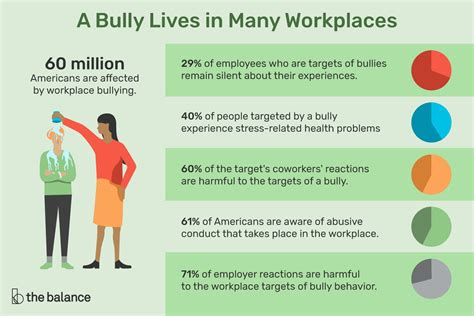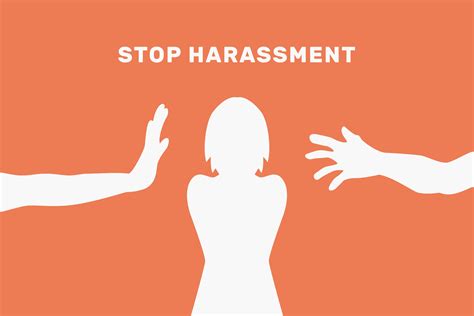
- How to Deal with Workplace Harassment
- Your Rights and Responsibilities
- How to Deal with Workplace Harassment
- Reporting and Addressing Harassment
- Documenting Harassment
- Informal Resolution
- Formal Complaint
- How to Deal with Workplace Harassment: A Comprehensive Guide for Employees
- How to Deal with Workplace Harassment
- Preventing Harassment
- Dealing with Harassment
- Conclusion

How to Deal with Workplace Harassment
Workplace harassment is a pervasive problem in today’s corporate world. It can take many forms, from verbal abuse and insults to sexual harassment and physical violence. Dealing with workplace harassment can be difficult, but it is important to remember that you are not alone. There will be ways to help you.
Your Rights and Responsibilities
You have the right to work in an environment free from harassment. Employers are obligated to create and maintain a workplace free of harassment for all employees. This means that they must take steps to prevent harassment from occurring and to investigate and address any complaints of harassment.
Your responsibilities include reporting any harassment that you experience or witness. You should also cooperate with any investigations into harassment and provide truthful information.
Employer’s Responsibilities to Prevent Harassment
Employers have a legal obligation to uphold a harassment-free work environment. To fulfill this obligation, they must:
– Establish a clear and comprehensive anti-harassment policy.
– Communicate the policy to all employees.
– Implement a grievance procedure for reporting and investigating complaints of harassment.
– Provide training on harassment prevention for all employees.
– Take prompt and appropriate action to address any complaints of harassment.
These measures help to create a positive and respectful work environment where everyone feels safe and respected. If you experience or witness harassment at work, it is essential to report it to your employer immediately.
How to Deal with Workplace Harassment
Workplace harassment is a serious issue that can have a devastating impact on victims. If you are experiencing harassment at work, it is important to know how to report it and address it effectively. Here are some tips:
Reporting and Addressing Harassment
If you are experiencing harassment at work, it is important to report it to your supervisor or human resources department. Be sure to gather evidence of the harassment, such as emails, text messages, or witness statements. Escalate the issue to the appropriate channels if your supervisor or HR department does not take action.
Documenting Harassment
Documenting the harassment is crucial. Keep a record of every incident, including the date, time, and specific details of what happened. Also, take note of any witnesses who may corroborate your claims. This documentation will be essential if you need to file a formal complaint or take legal action.
Informal Resolution
In some cases, you may be able to resolve the harassment informally. This may involve talking to the person who is harassing you directly or going through a mediation process. However, if the harassment is severe or does not stop after you have requested it, you should proceed with a formal complaint.
Formal Complaint
If you are unable to resolve the harassment informally, you should file a formal complaint with your employer. If your internal efforts to resolve the harassment don’t yield results, you could have options to file an official complaint with an outside agency, such as the Equal Employment Opportunity Commission (EEOC).
How to Deal with Workplace Harassment: A Comprehensive Guide for Employees
Workplace harassment is a serious issue that can have a devastating impact on victims’ lives. Harassment can manifest in various forms, from physical threats and verbal abuse to discriminatory behavior and hostile work environments. Dealing with harassment can be a daunting task, but understanding your rights and knowing how to respond can empower you to protect yourself and your well-being.
Recognizing Workplace Harassment
Before exploring coping mechanisms, it’s imperative to identify different types of workplace harassment. It includes:
- Physical Harassment: Physical attacks, unwanted touching, or threatening gestures.
- Verbal Harassment: Hurtful comments or threats, insults, and offensive jokes.
- Discriminatory Harassment: Actions that target individuals based on protected characteristics, such as gender, race, religion, or sexual orientation.
- Hostile Work Environment: A persistent pattern of offensive and intimidating behavior that creates an uncomfortable work atmosphere.
- Cyberbullying: Harassment using electronic means, including emails, text messages, or social media.
Self-Care for Victims
Coping with workplace harassment can take an emotional toll. Here are some strategies to safeguard your mental and emotional well-being:
Establish Boundaries
Draw clear boundaries to prevent further harassment. Inform the perpetrator of your expectations and consequences if they continue their behavior.
Document the Harassment
Keep a detailed record of all incidents of harassment, including dates, times, witnesses, and any supporting evidence. This documentation will be crucial if you decide to file a formal complaint or seek legal recourse.
Seek Support
Don’t hesitate to seek support from trusted friends, family members, or a therapist. Talking about your experiences can provide emotional release and help you develop coping mechanisms.
Take Care of Your Physical Health
Workplace harassment can impact your physical health. Prioritize getting enough sleep, eating healthy, and exercising regularly. These activities can reduce stress and improve your overall well-being.
Know Your Rights
Educate yourself about your legal rights regarding workplace harassment. Most countries have laws in place that protect employees from harassment, and knowing your rights can empower you to stand up for yourself.
Reporting and Resolving Harassment
If you’ve experienced workplace harassment, it’s vital to report it to your employer or HR department. Here’s how to do it effectively:
Report Promptly
Don’t delay reporting harassment. The sooner you report it, the sooner your employer can investigate and take appropriate action.
Be Specific
Provide detailed information about the harassment, including specific incidents, dates, times, and witnesses.
Follow Up
After reporting the harassment, follow up with your employer or HR department to ensure that the investigation is underway and that appropriate action is being taken.
Consider Legal Action
If your employer fails to address the harassment effectively, you may consider legal action. Consulting with an employment lawyer can help you understand your options and protect your rights.
Employer’s Responsibilities
Employers have a legal obligation to create a harassment-free workplace. Here are some steps they should take:
Establish a Clear Policy
Develop and communicate a clear policy that prohibits workplace harassment.
Provide Training
Educate all employees on what constitutes harassment and their responsibilities to prevent it.
Investigate Complaints Promptly
Investigate all complaints of harassment thoroughly and take appropriate disciplinary action if necessary.
Support Victims
Provide support to employees who have experienced harassment, including counseling and other resources.
Monitor the Workplace Climate
Regularly monitor the workplace climate to identify and address any potential issues before they escalate.
Conclusion
Workplace harassment is a serious issue that no employee should have to endure. By understanding your rights, protecting your mental and emotional health, and taking appropriate reporting and resolution steps, you can effectively deal with workplace harassment and create a more respectful and inclusive work environment. Remember, you’re not alone. There are resources available to support you if you’ve been a victim of harassment. Don’t hesitate to speak up and protect your well-being.
How to Deal with Workplace Harassment
Are you being harassed at your workplace? Unfortunately, workplace harassment is a common issue for many people, but it’s important to know that you’re not alone. There are things you can do to deal with harassment and protect yourself from further harm. In this article, we’ll discuss how to prevent harassment and how to deal with it if it does occur.
Preventing Harassment
The best way to deal with harassment is to prevent it from happening in the first place. Here are some tips for creating a harassment-free workplace:
- **Foster a culture of respect and inclusion**. This means promoting open communication, training employees on how to prevent harassment, and implementing clear policies against harassment.
- **Train employees on how to prevent harassment**. This training should include information on what constitutes harassment, how to report it, and what resources are available to employees who have been harassed.
- **Implement clear policies against harassment**. These policies should outline the company’s definition of harassment, the consequences for engaging in harassment, and the steps employees can take to report harassment.
Dealing with Harassment
If you are experiencing harassment at work, there are things you can do to protect yourself and stop the harassment. Here are some tips for dealing with harassment:
- **Document the harassment**. Keep a record of all the incidents of harassment, including the date, time, location, and what happened. This documentation will be helpful if you need to file a complaint or take other legal action.
- **Report the harassment to your supervisor or HR department**. It’s important to report the harassment to someone who can help you stop the harassment and protect you from further harm.
- **File a complaint with the Equal Employment Opportunity Commission (EEOC)**. The EEOC is a federal agency that enforces the laws against discrimination, including harassment. You can file a complaint with the EEOC if you believe you have been harassed.
- **Take other legal action**. If you have been harassed, you may be able to take other legal action, such as filing a lawsuit against your employer.
- **Seek support from a therapist or counselor**. Dealing with harassment can be stressful and traumatic. A therapist or counselor can help you cope with the harassment and develop strategies for dealing with it.
Conclusion
Workplace harassment is a serious problem that can have a devastating impact on the lives of those who experience it. If you are being harassed at work, it’s important to know that you’re not alone. There are things you can do to deal with harassment and protect yourself from further harm.


